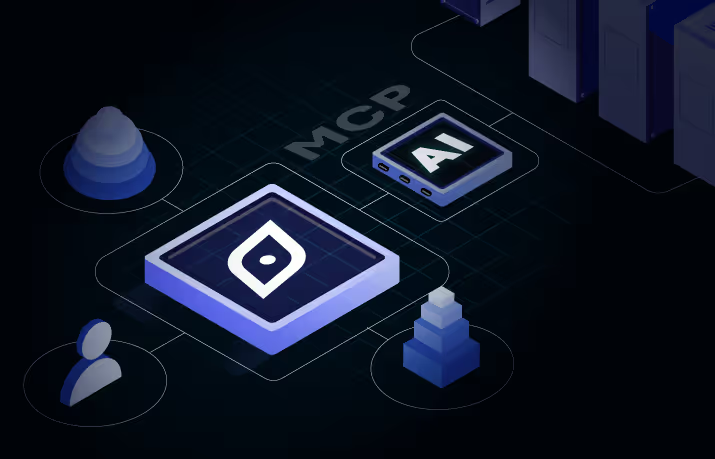Navigating the Future of Talent Intelligence: Agility, Data, and Compliance
As organizations grapple with AI disruption, borderless talent competition, and regulatory complexity, talent intelligence has emerged as the linchpin of strategic workforce planning. Cody Martin, Director of Talent Intelligence at Johnson & Johnson, reveals how global enterprises are preparing for 2025 and beyond. His approach not only addresses immediate workforce challenges but also creates a foundation for sustainable competitive advantage in an increasingly complex talent landscape.
Watch the full podcast here:
The following are some insights from the conversation.
Talent Intelligence: Powering Workforce Agility as the New Currency
In today’s rapidly evolving business environment, the ability to adapt quickly has become essential to survival. While technological advancement and changing workforce expectations were already accelerating transformation, recent global disruptions have made agility the defining characteristic of successful organizations. Talent intelligence plays a key role in enabling this agility. As Cody notes,
“Leaders need the ability and readiness to adapt to changing environments.”
This fundamental shift requires talent teams to move beyond reactive measures toward proactive strategies built on two critical pillars.
- Proactive Data Hygiene: Continuously ensuring that both internal and external workforce datasets remain clean and actionable.
- Anticipatory Insights: Utilizing predictive analytics that spot emerging trends before they disrupt operations.
Agility isn’t merely about speed; it’s about precision. When organizations combine reliable data with forward-looking scenario planning and talent intelligence, they develop an essential competitive advantage: the ability to respond effectively to market shifts while competitors remain stuck in reactive mode.
This agility, however, is only valuable when directed at the right targets, which requires a fundamental reassessment of the competitive talent landscape.
Redefining the Talent Battleground with Talent Intelligence
The very definition of talent competition has shifted dramatically in recent years. Traditional industry boundaries no longer contain talent competition as specialized skills become increasingly transferable across sectors. Talent intelligence helps organizations understand these shifts, for example, a pharmaceutical company’s toughest competitor for AI specialists isn’t another drug maker; it’s likely a tech giant or innovative startup.
“Your competitors are not always other companies in your industry. If you have a cutting-edge IT department, your rivals might be tech firms or supply chain innovators across sectors,” explains Cody
This expanded competitive landscape requires talent intelligence teams to:
- Map Talent Flows: Identify non-traditional competitors by tracking how skills and talent migrate across industries.
- Benchmark Function-Specific Excellence: Analyze competitors’ strengths in specific functional areas (e.g., Amazon’s logistics or Google’s AI capabilities) rather than relying solely on industry peers.
By recognizing this broader battleground, organizations gain critical insights into where talent is moving and why. This expanded view naturally leads to the next critical question: how do we measure and analyze this complex ecosystem?
Talent Intelligence Metrics and AI: Cutting Through the Noise
With a clear understanding of both the need for agility and the true competitive landscape, organizations must next determine what to measure and how to generate actionable insights. In a world overflowing with data points and workforce analytics tools, starting with the fundamentals creates clarity. As Cody elaborates:
“Start at the basics, supply is the number of talent with a certain skill in a particular organization today; demand looks at what skills are being sought for the future; and talent flow shows which skills are moving between companies.”
This foundation creates a coherent framework for understanding the talent ecosystem:
- Supply: Assessing current talent pools with critical skills.
- Demand: Monitoring emerging skill requirements through job postings and hiring trends.
- Talent Flow: Evaluating how expertise shifts between companies and industries.
These metrics gain even greater power when enhanced by artificial intelligence and talent intelligence. AI’s ability to analyze thousands of job descriptions reveals subtle market shifts that human analysts might miss. Pattern recognition in hiring data can identify emerging roles before they become widely recognized, allowing forward-thinking organizations to secure talent ahead of competitors.
While powerful, these insights only deliver value when they can be implemented within appropriate governance structures, particularly in regulated industries such as healthcare, where J&J is a major player.
Compliance Innovation: The Unfair Advantage
The promise of data-driven talent intelligence is tempered by increasing regulatory scrutiny around data privacy, algorithmic bias, and ethical AI use. Rather than viewing these constraints as limitations, forward-thinking organizations transform compliance into a strategic advantage.
“Our edge isn’t just innovation, it’s compliant innovation. Others might move faster, but they’ll hit regulatory walls. We build guardrails first,” notes Cody on J&J’s workforce strategy.
This approach represents a fundamental shift in perspective. Instead of treating compliance as an afterthought or obstacle, it becomes integrated into the innovation process through:
- Cross-Functional Collaboration: Creating councils that bring together IT, legal, and HR teams to review AI projects from inception.
- Prioritized Automation: Starting with lower-risk processes before gradually scaling to more complex decision-supporting systems.
Organizations that master compliant innovation develop a distinct advantage: the ability to implement and scale new approaches without the disruption of regulatory interventions. This sustainable approach to innovation ensures continuous progress rather than the start-stop pattern that plagues less disciplined competitors.
Even the best talent intelligence and insights are ineffective without strategic communication to drive organizational action.
Storytelling That Drives Action
The most sophisticated data models and AI-driven insights are worthless if they don’t influence decision-making. This reality elevates storytelling from a soft skill to a strategic necessity in talent intelligence.
“Start with the business question and determine what specific challenges your leaders are trying to address.”
Effective insight communication follows a clear progression:
- Business-First Framing: Beginning with the strategic challenges that matter most to decision-makers (e.g., “Can we staff this new digital division?”).
- Blended Insights: Combining quantitative data with qualitative context from industry trends, internal feedback, and market signals.
- Tiered Delivery: Presenting key findings in accessible executive summaries while providing depth in supporting materials.
This approach bridges the gap between workforce data and talent decisions, ensuring that insights aren’t merely interesting but actionable. When technical complexity is translated into strategic clarity, leaders can confidently make forward-looking talent decisions that directly support business objectives.
As these decisions increasingly take place in a global context, the talent intelligence function must expand its perspective beyond immediate workforce indicators.
The Road Ahead: Geopolitics, Skills, and Strategic Foresight
The most sophisticated talent intelligence functions are now integrating broader environmental factors into their analysis. This expanded perspective recognizes that workforce availability and skill development are increasingly influenced by factors outside traditional HR domains.
“Start with supply/demand basics, then layer in macro trends, it’s a maturity curve,” notes Cody.
This evolution requires talent intelligence teams to incorporate:
- Geopolitical Awareness: Understanding how international relations, trade policies, and regional conflicts affect talent availability and mobility.
- Skill Adjacencies: Identifying transferable capabilities that allow organizations to develop talent internally when external hiring becomes challenging.
By leveraging talent intelligence and connecting workforce planning to broader trends, organizations develop greater resilience against disruption. They can anticipate potential challenges months or years before they materialize, creating contingency plans that maintain operational continuity while competitors scramble to react.
Building a Future-Ready Talent Engine
The organizations that thrive in an unpredictable world won’t merely collect data; they’ll transform it into strategic action. By building a comprehensive talent intelligence capability that combines agility, accurate competitive assessment, meaningful metrics, compliant innovation, and strategic storytelling, talent leaders can turn uncertainty into a competitive advantage.
The future belongs to organizations that can continuously adapt their talent strategies using talent intelligence while maintaining governance structures that ensure sustainable progress. By integrating these approaches, forward-thinking companies aren’t just preparing for the future; they’re actively shaping it.





.svg)



.svg)





.svg)
